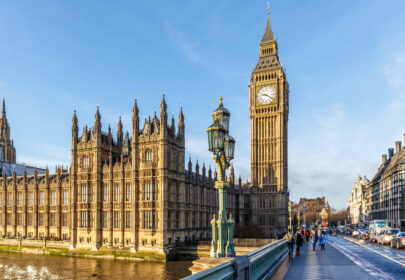Blog
Pensions for children – what you need to know

At a glance
- Starting a child’s pension is a tax-efficient way to save for their future and set them up for future financial wellbeing.
- Only a parent or guardian can open up a pension for a child, but then anyone can contribute.
- By starting early, even small contributions to a child’s pension have time to grow, with the power of compounding at play.
Saving for retirement might not be something you think about starting in childhood, but creating a pension for your children – even though they’re decades away from retirement – can set them up for future financial wellbeing.
Not only are pensions a tax-efficient way to save, setting up a pension as early as possible means even small contributions have more time to grow.
Having a growing pension pot offers valuable peace of mind, meaning your children can focus on achieving their financial goals when they reach adulthood and have a better chance for a comfortable retirement. And given that we’re all living longer – one in five girls and one in seven boys born in 2020 are expected to live to 1001 – planning now for your children’s future can have a real positive impact.
When can you start a pension for a child?
A child can have a pension from birth – there’s no minimum age. Only a parent or guardian can open up a pension for a child, but once it’s up and running, anyone can contribute – parents, grandparents, godparents, friends or other family members.
LIke an adult’s pension, contributions receive a 20% boost from the government – even if your child is not yet a taxpayer. And if the time comes and your child becomes a higher or additional-rate taxpayer, they can claim further relief on future contributions via self-assessment. This tax relief from the government is something you won’t get from an ISA, another tax-efficient saving tool.
In addition, any growth generated by the pension won’t be subject to Income Tax or Capital Gains Tax.
If you’re the child’s parent or guardian, you’ll look after their pension until they turn 18. At that point, control passes to them. But they won’t be able to access their pension until they reach age 55, which is rising to age 57 in 2028.
How much can you pay into a child’s pension?
One key difference between an adult’s pension and a child’s pension is the amount you can contribute each year.
You can pay up to £2,880 into a child’s pension for the 2023/24 tax year. When you take into account the 20% in tax relief from the government, this adds up to £3,600.
Saving into a child’s pension can benefit more than just your children – it may also help mitigate an Inheritance Tax (IHT) liability, as payments may be covered by the annual £3,000 IHT gifting allowance, or the exemption for payments made out of income.
While the annual contribution limit for children is much lower than that for adults, the magic of compounding means even small contributions can add up over the long term.
How does compounding work?
“Starting early, and saving regularly can have an extraordinary impact,” says Tony Clark, Senior Propositions Manager at St. James’s Place.
“It’s all about compound interest – it is the key to growing wealth. Albert Einstein called compound interest the eighth wonder of the world and said; ‘Those who understand it, earn it, those who don’t, pay it.’ The secret is to start saving into a pension as early as possible, even with relatively small amounts, to take advantage of it.”
Essentially, compounding is growth on top of growth. When the money generated by your investments is reinvested, it has the potential to generate its own growth. And the longer an investment has to potentially grow, the greater the benefit will be from the compound effect of those reinvested returns.
In addition, as children have time on their side, you may wish to take on more risk with their pension investments. It’s not unusual for younger investors to be fully invested into equity funds, for example.
How will your child benefit from a pension?
Saving into a pension for your children can ease the pressures they face as they enter adulthood. For example, they can focus on things other than retirement planning when they are just starting out in their careers and facing the costs of starting a family and buying their first home. Starting a pension early also may help to boost their understanding of tax relief and the value of saving.
“Educating the next generation in financial literacy is not a nice to have – it’s the best investment you can make to secure their financial future”, says Tony.
Children learn their money saving habits very early in life, yet young children rarely receive lessons on budgeting and money management. So, helping a child fund their own pension could be one way to help them understand concepts such as compound interest.
Are there other ways to save for a child’s future?
Starting and contributing to a child’s pension isn’t the only way to save for their future. A Junior ISA (JISA) is one of the more popular choices.
A JISA must be opened by a parent or legal guardian, but after that, anyone can contribute up to the age of 18. As with other ISAs, any returns won’t be subject to Income Tax or Capital Gains Tax. Another benefit is that by gifting money to children, you’re removing money from your own estate, which could help mitigate IHT or reduce the amount payable when you die.
As of the 2023/24 tax year, you can contribute £9,000 per child into a JISA each year. This can be either stocks and shares, cash or a mix of both. Keep in mind that the tax benefit that comes with ISAs is one that you have to ‘use or lose’ – you can’t roll it over into another year.
Taking financial advice will help you put a plan in place – so you can find the right balance between paying for your children’s needs now and saving for their future.
We can also check to make sure you’re in a good financial position yourself. Before setting up a pension for your child, you should have a savings safety net and protection, and be certain that you’re saving enough for your own retirement.
To talk about the best ways to invest for your children’s future, get in touch.
The value of an investment with St. James’s Place will be directly linked to the performance of the funds selected and may fall as well as rise. You may get back less than the amount invested.
The levels and bases of taxation, and reliefs from taxation, can change at any time and are generally dependent on individual circumstances.
Sources
1Past and Projected Period and Cohort Life Tables: 2020-based, UK, 1981 to 2070, Office For National Statistics, January 2022
SJP Approved 28/04/2023
Tea or Coffee?
Why not get in touch to discuss your requirements? We understand that life is busy, that's why we're happy to meet in person or virtually. Let's start to plan your future together.















































































































